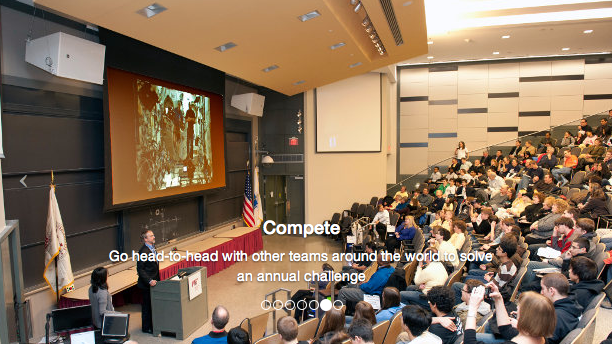 What – South Charleston High School students compete in Zero Robotics national contest finals programming actual robotic satellites that are on the International Space Station. Students watch via live downlink as competition judged by astronauts aboard the ISS.
What – South Charleston High School students compete in Zero Robotics national contest finals programming actual robotic satellites that are on the International Space Station. Students watch via live downlink as competition judged by astronauts aboard the ISS.
Who – South Charleston High School and other finalists teams from across the US, Europe, Russia, Australia.
When – Monday, January 25, 2016.
Where – Massachusetts Institute of Technology, Cambridge, Massachusetts, the Eurospace Centre, Belgium, the Seymour Centre at the University of Sydney, Australia and Roscosmos, Russia.
More – Zero Robotics http://www.zerorobotics.mit.edu is a competition in which high school students program small robots to fly aboard the International Space Station. The robots, called SPHERES, were originally conceived and built by students in MIT’s Space Systems Laboratory. These robots — roughly the size and shape of a basketball — run on compressed gas, and can be programmed to spin, revolve, hover and navigate through the air. Researchers use SPHERES to test maneuvers for spacecraft performing autonomous rendezvous and docking. They fly inside the station’s cabin autonomously, but under the supervision of an astronaut. Each is self-contained with power, propulsion, computing and navigation equipment.
This year’s game called spySPHERES presents the students with multiple challenges that are important in current space research and real missions: 1) collecting parts of a (virtual) broken satellite to re-use them; 2) taking (virtual) pictures of your opponent to learn more about them; and 3) orbiting the Earth, which means the satellite is sometimes illuminated and other times in the dark. The competitors need (virtual) energy, collected while they are illuminated, in order to move and take pictures. In order to be victorious, they must collect as many parts as possible and take as many pictures as possible all while avoiding having pictures taken of them and managing limited resources.
Zero Robotics is sponsored by NASA, the Center for the Advancement of Science in Space (CASIS) and ESA.